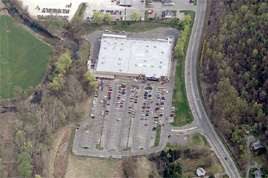Specialty
Air Quality
SECTOR
Commercial
TYPE
Permitting / Compliance
CLIENTELE
Private Sector
TIMESPAN
2010LOCATION
North Adams, MA
Project Number:
3206Wal-Mart Store #1985-05, North Adams
SERVICE:
GHG and Mesoscale Air Quality Analysis
DESCRIPTION:
Tech Environmental provided greenhouse gas (GHG) and mesoscale air quality studies for a new 155,794 square foot Walmart in North Adams. The studies were prepared as part of a Notice of Project Change filing under MEPA.
The GHG analysis was performed consistent with the Massachusetts Executive Office of Energy and Environmental Affairs (EOEEA) "Greenhouse Gas Emissions Policy and Protocol" (May 5, 2010). The Policy requires a project to quantify carbon dioxide (CO2) emissions and identify measures to avoid, minimize or mitigate such emissions, quantifying the effect of proposed mitigation in terms of emissions reduction and energy savings. The GHG Emissions Policy and Protocol requires quantification of GHG emissions from three sources: direct emissions from on-site stationary sources, indirect emissions from energy generated off-site (electricity), and traffic generated by the project. The project's GHG emissions will include: 1) direct emissions of CO2 from natural gas combustion for space heating, generating hot water, and cooking of food for sale; 2) indirect emissions of CO2 from electricity generated off-site and used on-site for lighting, building cooling and ventilation, and refrigeration equipment; and 3) transportation emissions of CO2 from project traffic. CO2 emissions were quantified for: (1) the Base Case corresponding to the 7th Edition of the MA Building Code that adopted the 2009 IECC with MA amendments (the Code), and (2) the Preferred Alternative, which includes all mitigation measures.
This analysis used the eQUEST energy design software (version 3.63b, July 2009), which incorporates the U.S. Department of Energy's DOE-2 building energy use model. Energy mitigation measures incorporated into the Walmart store design include added roof and wall insulation, double-pane low-e glass windows, an energy management system, high-efficiency HVAC units and refrigeration equipment, interior light power density lower than Code, skylights with day-lighting controls, a cool membrane roof, and DCV controls on store fresh-air ventilation. Total direct and indirect CO2 emissions are reduced 21.6% from the base case (a Code-compliant building) with these measures. Transportation Demand Management measures will reduce project-related motor vehicle emissions by 2%.

